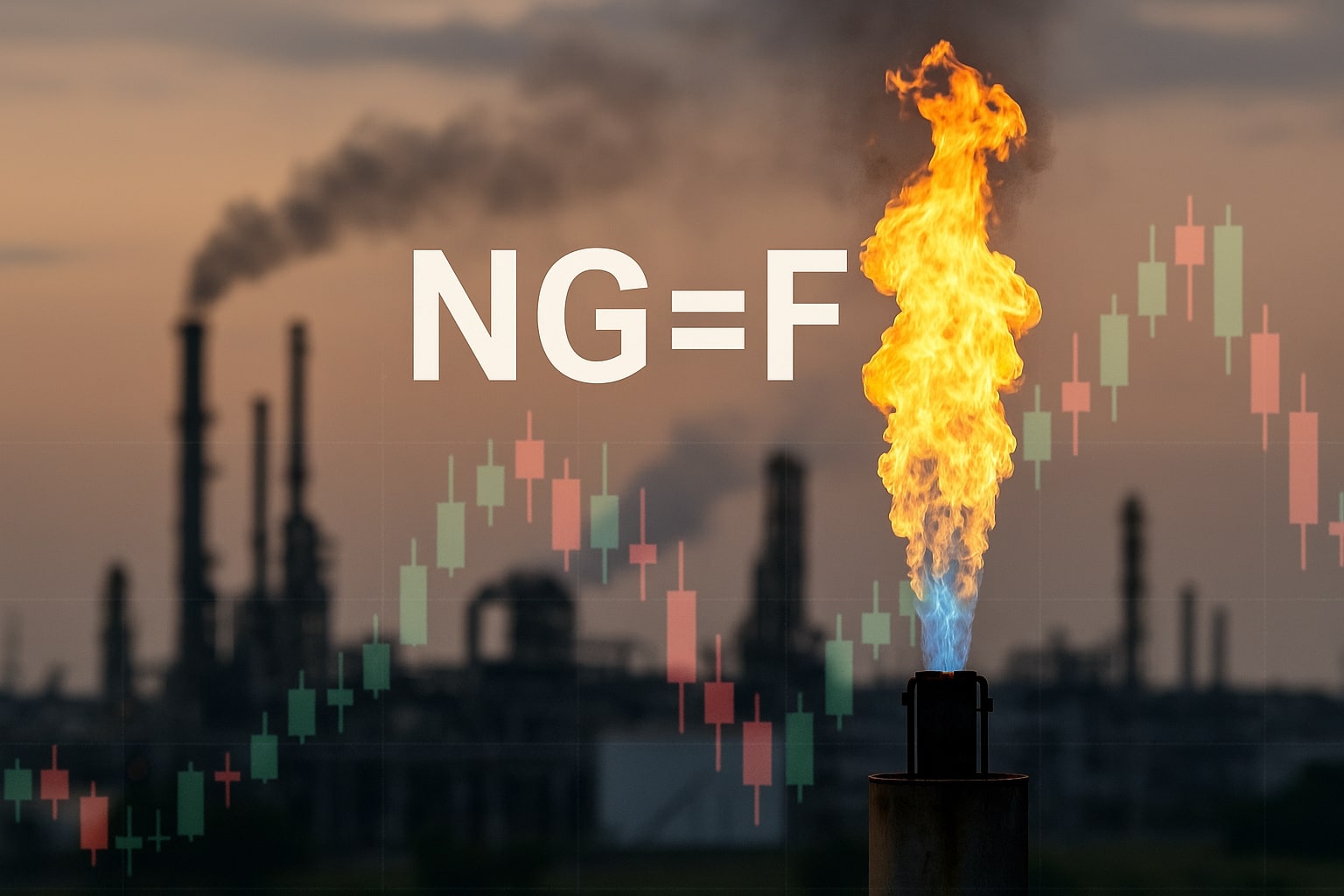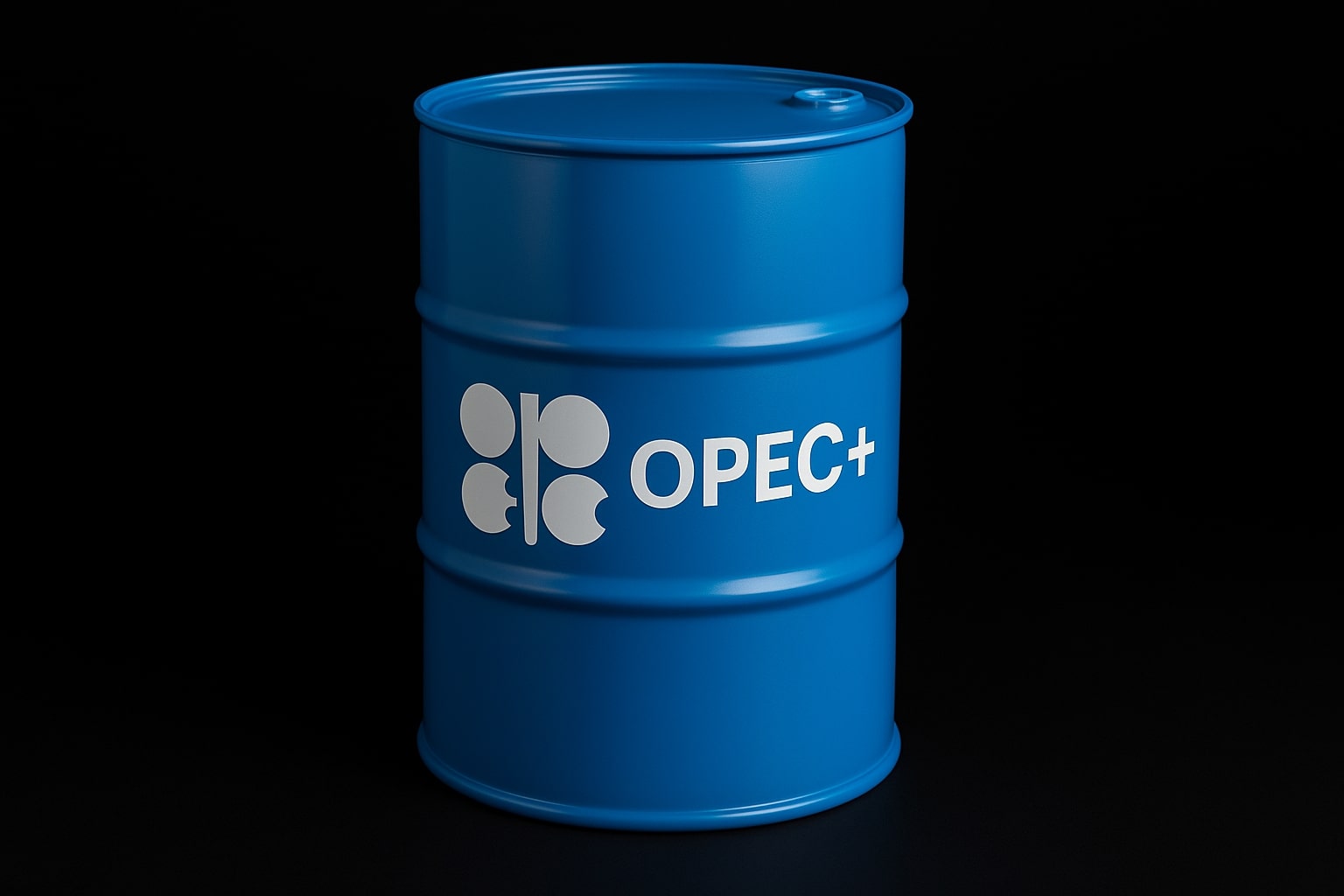
Natural Gas Price Analysis: Can NG=F Break Above $3.50 or Will It Revert to Bearish Patterns?
What will drive Natural Gas prices in the coming weeks? Traders are keenly watching NG=F as it hovers near the $3.43 mark. Can it breach the $3.50 resistance and continue its upward trajectory, or will it face a pullback? | That's TradingNEWS
Natural Gas Price Forecast: Bearish Reversal or Bullish Continuation?
Natural Gas (NG=F) Futures Overview and Short-Term Outlook
Natural gas prices have been on a wild ride recently, as market participants react to varying factors like production cuts, weather forecasts, and storage trends. As of the latest data, natural gas futures are trading at $3.43 per million British thermal units (MMBtu), showing a slight decrease of 0.7%. This drop follows a more significant jump in prices earlier in the week, which saw futures rise by over 10%. Now, the market faces a critical juncture with resistance levels at $3.51 and support levels potentially testing the 200-day moving average (MA) at $3.20.
Natural Gas Production and Storage Levels Impacting Price Dynamics
One of the key factors influencing NG=F prices is the level of production and storage. According to data, U.S. gas output fell to an average of 104.9 billion cubic feet per day (bcfd) for May, slightly below April's record of 105.8 bcfd. Despite these reductions, daily output was on track to dip even further to 103.9 bcfd on Wednesday, indicating a tightening supply. Energy analysts also highlighted the steady rise in natural gas storage, which is already sitting 3% above the five-year average. In addition, utilities are poised to continue injecting gas into storage as heating and cooling demand remains subdued across much of the U.S. The EIA's weekly report also revealed a storage injection of 106 Bcf in the latest week, consistent with the seasonal trend but falling short of market expectations.
LNG Export Demand and Weather Impact on Natural Gas Prices
The export side of the equation remains significant as well. U.S. liquefied natural gas (LNG) exports dropped to 15.1 bcfd in May, marking a decline from April's peak of 16.0 bcfd. This reduction was mainly driven by maintenance at key LNG export plants like Cameron LNG and Cheniere Energy’s Corpus Christi terminal. Despite the current slowdown, analysts expect LNG demand to remain robust, with U.S. LNG exports continuing to play a central role in global energy markets.
Looking ahead, weather forecasts show warmer-than-normal temperatures through June 6, potentially reducing the need for heating. However, this is a double-edged sword as it also reduces cooling demand during the hotter months. A moderate decline in gas demand is expected, with LSEG’s forecast projecting a decrease from 99.4 bcfd this week to 94.9 bcfd next week. The combination of strong export demand and relatively low storage levels globally could act as support for prices if the weather turns significantly cooler in the latter part of the year.
Market Indicators and Technical Outlook for Natural Gas
From a technical perspective, NG=F futures are currently testing the 50-day moving average at $3.43. After an initial breakout above the 50% Fibonacci retracement level, prices struggled to maintain momentum and are now heading back toward key support levels. Traders should watch for a confirmation of a bullish reversal if the price breaks above $3.51—a key resistance level. If natural gas fails to maintain upward momentum, the next support is likely to be at the 200-day MA around $3.20. A pullback below this level could trigger a deeper correction, potentially revisiting lower levels like $3.10 or even the $2.90 region.
Furthermore, the Relative Strength Index (RSI) currently sits at 56, indicating a neutral to slightly bullish trend. Although the RSI is not yet in overbought territory, the MACD shows weakening momentum, suggesting a potential pullback or consolidation before further upward movement can be sustained.
Insider Transactions and Market Sentiment on Natural Gas
In the world of natural gas, insider transactions are often a valuable indicator of market sentiment. While detailed data on natural gas insiders is scarce, the broader sentiment from major producers indicates cautious optimism. Energy analysts suggest that natural gas futures may see some upside if key technical levels like $3.50 and $3.60 are breached, but there is significant resistance near $4.00, where traders may start taking profits.
Natural Gas Futures: Bullish or Bearish for the Upcoming Months?
Looking at the broader trend, natural gas is currently in a range-bound market, with prices oscillating between $2.90 and $3.50 over the last few months. The current price of $3.43 is relatively close to the 50-day EMA, suggesting that the market is searching for direction. While the demand side remains relatively stable, supply concerns from maintenance at key infrastructure points and fluctuating LNG export levels could drive volatility.
Analysts are divided on whether the market will continue its bull run or face significant resistance. While there’s strong support at the 200-day MA at $3.20, any significant sell-off could trigger further downside to $3.10 or lower. Conversely, a clear breakout above $3.51 could lead to a bullish breakout, targeting $3.80 and potentially higher, especially if LNG demand picks up during the summer months.
Final Thoughts on Natural Gas Price Movement
In conclusion, natural gas prices are navigating through a period of uncertainty, with a neutral to bullish bias prevailing in the short term. The market is heavily influenced by a combination of weather patterns, supply dynamics, and export demand. Technical analysis suggests that the $3.43-$3.50 range will remain critical, with potential for further upside if key levels hold. However, any failure to break above $3.50 could result in a downtrend, with support at $3.20 being a critical level to monitor.
Traders and investors in NG=F should closely watch weather developments and production data for guidance in the coming weeks.
That's TradingNEWS
Read More
-
BITQ ETF Soars 66.55% as Bitcoin Blasts Past $124,000 — Crypto Equities Lead 2025 Rally
13.10.2025 · TradingNEWS ArchiveStocks
-
XRP ETFs XRPR, XRPI Slip as Ripple XRP-USD Holds $2.62 — SEC Fast-Track Could Ignite $20B
13.10.2025 · TradingNEWS ArchiveCrypto
-
Natural Gas Price Forecast - NG=F Steadies at $3.00 as U.S. Export Boom Tests Old Fields
13.10.2025 · TradingNEWS ArchiveCommodities
-
USD/JPY Price Forecast - Dollar to Yen Climbs to ¥152.28 as Japan’s Political Shakeup
13.10.2025 · TradingNEWS ArchiveForex



















